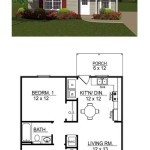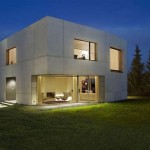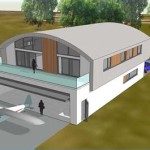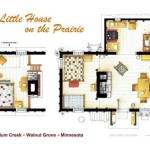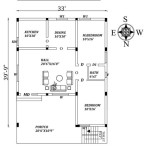Here is an article focusing on Craftsman Homes and their architectural plans:
Understanding Craftsman Home House Plans
Craftsman homes, a style deeply rooted in the American Arts and Crafts movement, represent a significant departure from the ornate Victorian architecture that preceded them. Emphasizing simplicity, handcrafted details, and natural materials, Craftsman architecture focuses on functionality and connection to the surrounding environment. Understanding Craftsman home house plans requires an appreciation for the period's philosophy and the architectural features that define the style.
The Arts and Crafts movement, which originated in England in the late 19th century, championed handcrafted goods over mass-produced items, advocating for a return to traditional craftsmanship and a rejection of industrialization's perceived negative effects. This philosophy translated into architecture through the use of natural materials like wood, stone, and brick, exposed structural elements, and an emphasis on interior spaces that were both comfortable and functional. American architects adapted and popularized the style, resulting in the distinctive Craftsman homes seen across the United States today.
Craftsman house plans are not a monolithic entity. They encompass variations like the Bungalow, Prairie School influenced designs and Mission Revival. Each variant presents unique features while remaining faithful to the core tenets of the Craftsman aesthetic. Understanding these nuances is crucial for accurately identifying and appreciating the diversity within the Craftsman style.
Key Characteristics of Craftsman House Plans
Several defining characteristics distinguish Craftsman houses from other architectural styles. Recognition of these features is vital for identifying and appreciating the essence of Craftsman design. These features are not merely aesthetic; they contribute to the overall functionality and livability of the home.
One of the most recognizable features is the low-pitched roof. Typically gabled, these roofs often extend beyond the walls, creating wide eaves with exposed rafters or brackets. This feature provides protection from the elements and adds visual interest to the exterior. The broad eaves are also integral to the shading and passive cooling strategies often employed in Craftsman designs.
Another common characteristic is the prominent front porch. Often supported by thick, tapered columns, these porches were designed to be inviting spaces for relaxation and social interaction. The porch serves as a transition zone between the public street and the private interior, fostering a sense of community. The columns, often resting on substantial piers of brick or stone, reinforce the sense of stability and permanence associated with Craftsman homes.
The use of natural materials is paramount in Craftsman architecture. Wood, stone, and brick are frequently used for both interior and exterior finishes. Wood siding, often cedar or redwood, is common, as are exposed wooden beams and trim. Stone or brick is often used for foundations, chimneys, and porch supports, adding texture and visual weight to the structure. The selection of natural materials contributes to the overall warmth and organic feel of the home.
Interior spaces in Craftsman homes typically feature an open floor plan, connecting the living room, dining room, and kitchen. This design promotes a sense of spaciousness and encourages social interaction. Built-in cabinetry, such as bookcases, window seats, and sideboards, is another hallmark of the style, providing functional storage and adding to the handcrafted feel. Fireplaces, often clad in brick or stone, serve as focal points in the living room, providing warmth and ambiance.
Windows in Craftsman homes are frequently multi-paned, especially in the upper sash. This design detail adds visual interest and allows for ample natural light. Casement windows and double-hung windows are both common choices. The use of stained glass is also prevalent, particularly in entry doors and transoms, adding a touch of artistry and color to the interior.
Variations in Craftsman Home Plans
While the core principles of the Craftsman style remain consistent, several variations exist, reflecting regional influences and evolving design preferences. Understanding these variations provides a more comprehensive appreciation of the style's adaptability and enduring appeal.
The Craftsman Bungalow is perhaps the most widely recognized variant. Characterized by its low, horizontal profile, wide front porch, and compact floor plan, the Bungalow was designed to be an affordable and practical home for the average family. Bungalows are typically one or one-and-a-half stories tall, with a simple gabled roof and minimal ornamentation. The emphasis is on functionality and efficient use of space.
Prairie School influenced Craftsman homes draw inspiration from the work of architect Frank Lloyd Wright. These homes feature strong horizontal lines, low-pitched roofs, and broad overhanging eaves. The emphasis is on integrating the home with the surrounding landscape, creating a sense of harmony between the built environment and nature. Prairie School Craftsman homes often incorporate ribbon windows, which run horizontally across the facade, providing ample natural light and expansive views.
Mission Revival Craftsman homes blend elements of the Craftsman style with Spanish Colonial architecture. These homes typically feature stucco exteriors, arched doorways, and red tile roofs. Decorative details, such as wrought iron railings and decorative tiles, add to the Spanish Colonial aesthetic. Mission Revival Craftsman homes are particularly common in the southwestern United States, reflecting the region's history and cultural influences.
Another variation involves the incorporation of elements from other architectural styles. It is possible to find Craftsman homes that subtly blend with Tudor, Colonial Revival, or even Art Deco motifs. These hybrid designs demonstrate the adaptability of the Craftsman style and its ability to evolve while maintaining its core identity.
The size and scale of Craftsman homes also vary considerably. While many Craftsman homes are relatively modest in size, larger examples can be found, particularly in affluent neighborhoods. These larger homes often incorporate more elaborate details and features, such as multiple fireplaces, spacious living areas, and formal dining rooms. However, even in larger Craftsman homes, the emphasis remains on handcrafted details and natural materials.
Interpreting and Utilizing Craftsman House Plans
Understanding how to read and interpret Craftsman house plans is essential for both homeowners and professionals involved in renovation, restoration, or new construction projects. These plans provide detailed information regarding the layout, dimensions, materials, and construction techniques used in building or modifying a Craftsman home.
A typical Craftsman house plan will include floor plans, elevations, sections, and details. Floor plans illustrate the layout of each room, including the location of walls, doors, windows, and fixtures. Elevations depict the exterior appearance of the house from different angles, showing the roofline, windows, doors, and other architectural features. Sections provide a cutaway view of the house, revealing the internal structure and construction details. Details show close-up views of specific elements, such as window trims, door casings, and built-in cabinetry.
When interpreting Craftsman house plans, it is important to pay attention to the dimensions and proportions of the rooms and features. Craftsman homes typically have well-proportioned spaces that are designed for comfortable living. The floor plans should also indicate the location of built-in features, such as bookcases, window seats, and fireplaces, which are integral to the Craftsman aesthetic.
The plans should also provide information regarding the materials used in construction. Pay attention to the specifications for siding, roofing, windows, and trim. Craftsman homes typically use natural materials, such as wood, stone, and brick. The plans should specify the type and grade of these materials, as well as any required finishes or treatments.
For renovation or restoration projects, it is important to carefully study the existing plans before making any changes. The plans can provide valuable insights into the original design intent and construction techniques. When making alterations, it is important to maintain the integrity of the original design and to use materials and methods that are consistent with the Craftsman style. This includes using appropriate trim profiles, window styles, and hardware finishes.
For new construction projects, Craftsman house plans can serve as a guide for creating a historically accurate and aesthetically pleasing home. However, it is important to adapt the plans to meet the specific needs and preferences of the homeowner. This may involve modifying the floor plan, adjusting the dimensions of the rooms, or incorporating modern amenities. However, it is essential to remain faithful to the core principles of the Craftsman style, such as the use of natural materials, handcrafted details, and an emphasis on functionality.
Ultimately, understanding Craftsman home house plans requires a blend of historical knowledge, architectural awareness, and practical skills. By appreciating the origins and characteristics of the style, and by carefully studying the plans, it is possible to create or restore a Craftsman home that embodies the spirit of the Arts and Crafts movement.

11 Craftsman House Plans With Photos Blog Homeplans Com

Craftsman Style Home Plans

Craftsman House Plans Home Floor Monster

1922 Craftsman Style Bunglow House Plan No L 114 E W Stillwell Co Plans Bungalow Floor

Durham Drive Craftsman House Plans Ranch

Luxury Craftsman Style House Plan 8643 Black Nugget Lodge

The Varina 1920s Bungalow 1923 Craftsman Style From Standard Homes Company Hous House Plans

3 Bedroom Craftsman House Plan With Bonus Room 1816 Sq Ft

Narrow Craftsman House Plan With Front Porch 3 Bedroom

Craftsman Style House Plan 3 Beds 2 5 Baths 2592 Sq Ft 929 833 Houseplans Com
Related Posts

